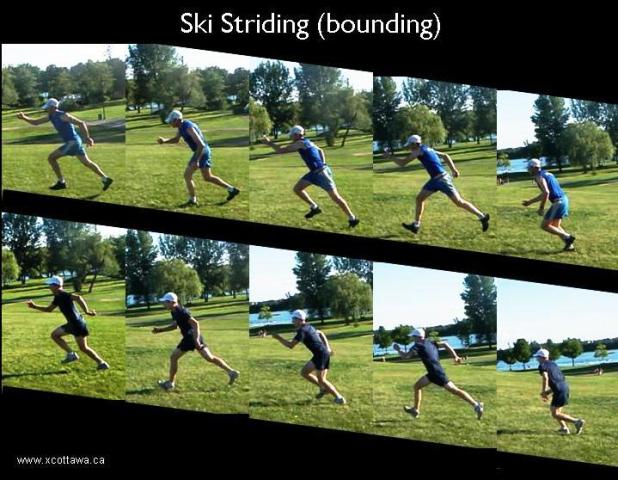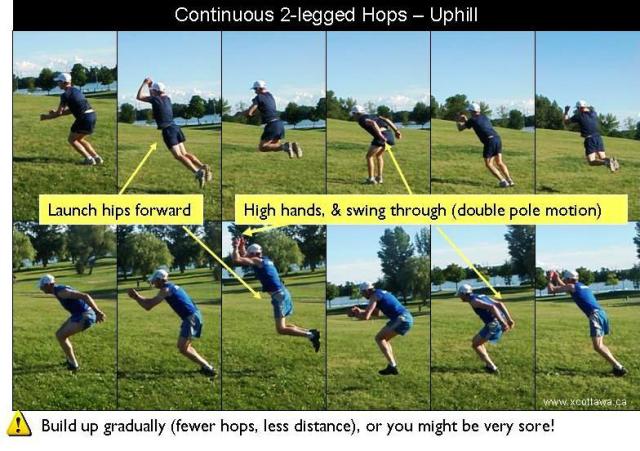They say “skiers are made in the summer.” Sometimes I wonder
if this saying was prompted by coaches trying to help skiers endure those hot
summer days while rollerskiing in boots made for subzero temperatures. But I do
believe that summer is a great time to set down a solid foundation of
ski-specific endurance, strength, and refine technique so that when the snow
arrives you can focus on what you need to get fast for racing.
XC Ottawa’s dryland training usually starts with a staple set of drills. They are simple and require little equipment. You can do all of these on any gradual hill more than 100m long (we use the big hill at Mooney’s Bay). Here are some of our favourites:
1. Ski walking (no poles)We repeat the same stretch of hill 5 times, trying to reduce the number of strides we take on each trip up the hill. Here are some things to keep in mind while you ski walk:
- lean into the hill (flex from the ankles with hips forward – don’t bend at the waist).
- keep hips loose and rotating forward at the leg drives through
- drive your knee forward quickly
- swing your arms from the shoulder (as if you had poles)
2. Ski striding/bounding
We start off bounding without poles. The focus is on stride length, working on exploding off the foot to “hang” in the air. Think of the time in the air as the diagonal stride glide. It shouldn’t feel like running.

3. Plyometrics
We do plyometric jumps to develop explosive power. Some
research suggests that performed properly and progressively, plyometrics can also
help prevent injury by improving balance and stability. For cross country
skiers, it should help develop the power that you need for the quick and snappy
movements required for proper ski technique. Plyometrics can place a big strain
on unconditioned muscles, joints and bones, so make sure you have a good base
of strength training before beginning plyometrics, and start out gradually
(fewer exercises, fewer reps). Emphasize quality (focus on speed and
power rather than endurance). Here are
some of the exercises we do:
One leg hops
Hop uphill on one leg, keeping contact with the ground to a
minimum. Alternate right and left legs (about 10 hops per leg).
Two leg hops
Legs together, hop continuously up a hill, keeping contact with the ground to a minimum. This explosive plyometric drill works a lot of muscle groups. Think double poling, get your hips forward and swing arms high to launch you up the hill. Count the number of jumps to get to a certain point, and try to cut down on that number. Here Gavin and Karl show us how it's done.

Jump sideways up the hill, using 1-skate timing
with the arms.
Dragging a tire uphill while ski walking or bounding helps develop strength and power in your legs, hips, and core that is specific to classic uphill technique. The tire also helps you get your body in a good “forward lean” position (hips forward), which is important for good cross country ski technique.
Want to try it? Here are more details.
Danielle
These drills are preceded by a 20-minute warmup run, and
typically followed by an interval workout (usually some form of hill interval
ski striding with poles for about 20-30 minutes). The benefits of these exercises go beyond skiing, and can help
improve strength and agility for other sports. So, even if you typically wait
for the snow before you train for skiing, consider incorporating some of these
drills into your warmup routine for some summer workouts.
Ready for winter!


